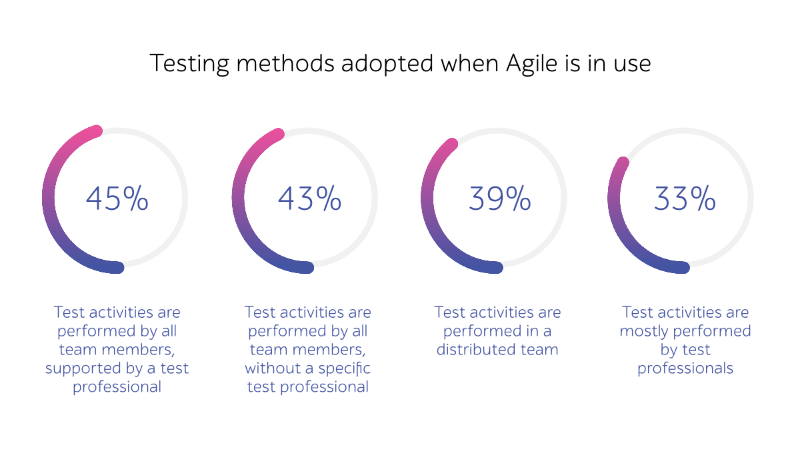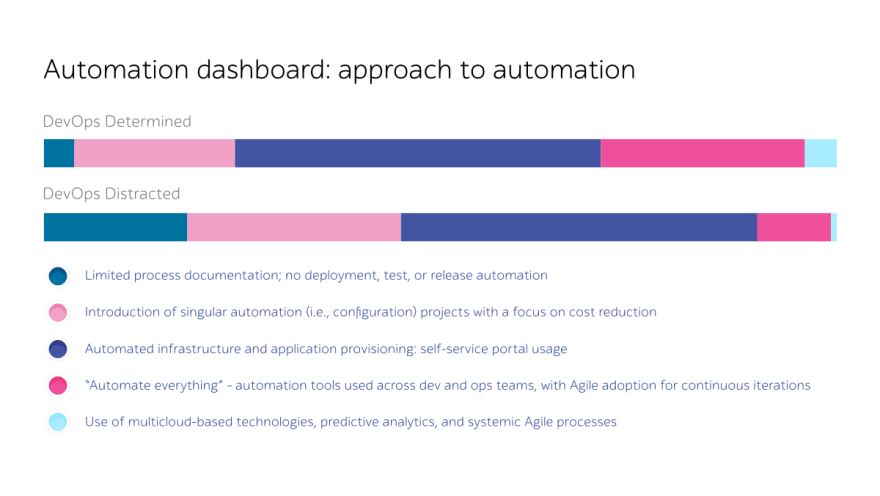Over the past decade, companies worldwide and across every vertical have implemented DevOps and Agile methodologies to launch flawless solutions that can satisfy the needs of consumers.
Now there’s no longer a demand for adopting DevOps practices – instead, the focus is on refining this methodology and continuously improving the efficiency of this process. Most enterprises want to enhance the delivery process and provide stability and security during production.
This approach irrevocably leads to the integration of test automation into a CI/CD pipeline, speeding up the feedback, and improving collaboration among teams.
In this article, we will briefly focus on the role of test automation in DevOps, moving from the discussion of the optimal SDLC model to the ongoing processes of this methodology.
Waterfall vs. hybrid model
A short while back, enterprises used to develop their solutions entirely based on the classical Waterfall model with checks being conducted after the development stage.
Let us explain why this won’t always play out. Imagine you are planning to build a huge billing solution that has at least 1,000 subsystems, and every month, a new version is to be released. It is implied that you must test the system and make sure everything is working smoothly (including all 1,000 subsystems).
But what if you added a new functionality a week ago? Now, you must check the whole software, which might take weeks, months, or even more.
Examples like this show that nowadays, there’s a huge demand in meaningful approaches to make development processes quicker, more clear-cut, and controllable, DevOps (and Agile) being among them.
According to the World Quality Report (WQR) 2018-19, companies are adopting the best of Agile methods and combining them with Waterfall model advantages (for example, clear definition and documentation of the total project scope) to build a convenient hybrid approach. It allows the PMO to improve results for long-term projects and more effectively address risks and uncertainty.
Source: https://www.capgemini.com/service/world-quality-report-2018-19/
In conformity to the WQR, the methods of organizing testing responsibilities (between Agile and non-Agile ones) show that the hybrid model is preferable for most companies.
Reach to DevOps Determined but do not get Distracted
What we want to highlight in this article is the DevOps practice. Now the use of this approach is increasing by leaps and bounds, as everyone can see the value it brings.
Source: https://www.gartner.com/smarterwithgartner/8-steps-to-get-devops-right
It is extremely important to automate at all stages of DevOps pipeline simply by starting from the application code development.
This tendency is proved by the latest IDC report concerning DevOps. Over a quarter of the DevOps Determined organizations (these statistics are based on the recent study of 420 large European enterprises) have the attitude to “automate everything”.
Source: https://www.microfocus.com/en-us/assets/application-delivery-management/the-journey-to-becoming-devops-determined
In a DevOps environment, the main objective is to deliver applications at a faster pace with the assurance of quality. This methodology is rapidly changing the way in which the companies approach software development using continuous application updates.
DevOps incorporates four basic ongoing processes: continuous delivery, continuous testing, continuous integration, and continuous monitoring.
The manual mode of checks conducted significantly slows down the process. To get the full benefits of DevOps practices, organizations have to smoothly integrate test automation into their CI/CD pipeline. It is almost the only way to ensure that releases occur at both high frequency and comply with the paradigm, “Quality at Speed”.
The benefits the enterprises get in this case are manifold: cost reduction on maintenance and upgrades, standardization of processes, bringing isolated teams (dev, QA, and operations) together, and many more.
What to know about continuous testing
Now let us have a closer look at the techniques that are typically implemented in a DevOps effort that we consider among the most significant ones.
- Continuous delivery (CD) is a technical practice used to shorten development cycles, reduce the risks and costs of releases, and provide software adjustments at any given moment.
CD becomes possible due to the existence of continuous testing (CT).
- Continuous testing is the process of executing frequent and thorough checks aimed at mitigating business risks throughout the SDLC.
CT largely depends on test automation (as it is an essential part of the delivery pipeline) but is different from it.
To make continuous testing practice improve the overall product quality, one has to build four pillars to support it: ensure code quality, ascertain that the code can pass the environments without manual intervention, be certain the created features are correct, and, finally, make sure that the best user experience is delivered.
It is important to understand that automation itself does not enable continuity in testing, but it helps assess the risks and reduces them. Continuous testing turns the application into a constantly deliverable one, as adjustments made can be reliably deployed at any given moment.
- Continuous monitoring is used to evaluate the health of the software as it runs in the production.
By collecting, ordering, and analyzing logs and metrics in real time, one can understand how the app amendments and updates influence the customer experience of the software product. With continuous monitoring, you can actively control the services, mitigate risk issues, find the source of problems, and take corrective actions.
By employing all these concepts, QA engineers can find defects at the early SDLC stage (which are considerably less expensive to fix) – it can help decrease issues related to the delivery schedule.
Bottom line
DevOps approach has become the common practice for many enterprises who want to deliver superior customer experiences and achieve other multi-purpose business values.
To achieve these goals, one must understand the role of test automation in one’s work. Choose the optimal test automation solution that can be seamlessly integrated in the project, keep the release cycles short, continuously get feedback, organize the team's progress, and get the expected results or even more!





Top comments (0)